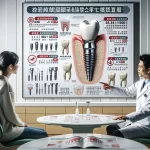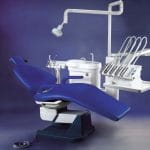Your mouth is not just a source of beauty; it’s a vital component of your overall health. Did you know that nearly 45% of people worldwide are affected by oral diseases? This staggering statistic underscores the importance of effective dental care practices. If you’ve ever felt overwhelmed by conflicting advice on oral hygiene or wondered how to keep your smile bright and healthy, you’re not alone.
In this guide, we promise to equip you with innovative strategies and practical tips to enhance your dental care routine in 2025. We’ll cover everything from cutting-edge tools to holistic approaches that prioritize your well-being. Get ready to transform your oral hygiene habits and discover how simple changes can lead to significant improvements in your health. Are you ready to take charge of your dental care? Let’s embark on this journey together!
Understanding Your Oral Microbiome
What is the Oral Microbiome?
Your mouth is home to a complex ecosystem of microorganisms collectively known as the oral microbiome. This intricate community of bacteria, fungi, and viruses plays a vital role in maintaining oral health and influencing overall well-being.
The Mouth-Body Connection
A balanced oral microbiome acts as a protective barrier, preventing harmful bacteria from entering the bloodstream and causing inflammation throughout the body. Research has shown strong links between oral health and systemic conditions such as heart disease, diabetes, and respiratory problems. By maintaining a healthy oral microbiome, you’re not just protecting your teeth and gums—you’re safeguarding your entire body.
Foundations of Effective Oral Hygiene
Brushing: The Cornerstone of Dental Care
Proper brushing technique is essential for removing plaque and preventing tooth decay. Follow these guidelines recommended by the American Dental Association:
- Brush twice daily for at least two minutes each time.
- Use a soft-bristled toothbrush and fluoride toothpaste.
- Hold your brush at a 45-degree angle to the gums.
- Use gentle, circular motions to clean all surfaces of your teeth.
- Don’t forget to brush your tongue to remove bacteria and freshen breath.
Flossing: Reaching Where Your Brush Can’t
Flossing is crucial for removing plaque and food particles from between teeth and along the gum line. Here’s how to floss effectively:
- Use about 18 inches of floss, winding most of it around your middle fingers.
- Gently guide the floss between teeth using a rubbing motion.
- When the floss reaches the gum line, curve it into a C shape against one tooth.
- Slide it into the space between the gum and tooth, gently rubbing the side of the tooth.
The Role of Mouthwash
Antimicrobial mouthwashes can help reduce plaque, prevent gingivitis, and freshen breath. Look for mouthwashes containing fluoride for added protection against tooth decay.
Diet and Lifestyle for Optimal Oral Health
Foods That Promote Dental Health
A balanced diet plays a significant role in maintaining oral health. Here’s a table outlining beneficial foods and how they contribute to dental wellness:
| Beneficial Foods | How They Help |
|---|---|
| Crunchy fruits and vegetables | Stimulate saliva production, which helps neutralize acids. |
| Dairy products | Provide calcium and phosphates to remineralize teeth. |
| Green and black teas | Contain polyphenols that reduce bacteria and plaque formation. |
| Nuts and seeds | Rich in minerals that strengthen tooth enamel. |
Habits to Avoid for Better Oral Hygiene
To maintain optimal oral health, it’s essential to avoid certain habits:
- Limit sugary and acidic foods and beverages.
- Avoid tobacco products (smoking and chewing tobacco).
- Refrain from using teeth as tools (e.g., opening packages).
- Don’t chew on ice or hard candies.
Professional Dental Care
Regular dental check-ups are crucial for maintaining optimal oral health. Professional cleanings remove hardened plaque (tartar) that brushing and flossing can’t eliminate. Your dentist can also detect early signs of dental issues and provide personalized recommendations based on your individual needs.
Advanced Treatments and Procedures
Explore innovative treatments available today:
- Fluoride treatments to strengthen enamel.
- Dental sealants to protect against decay.
- Periodontal therapy for gum disease.
- Early intervention for orthodontic issues.
Innovative Oral Care Technologies
The world of dental care is constantly evolving with cutting-edge technologies:
Smart toothbrushes: These devices provide real-time feedback on your brushing technique and track your oral hygiene habits over time.
Water flossers: These tools use a stream of pulsating water to remove plaque and food debris from between teeth and below the gum line.
Teledentistry: Virtual consultations allow for remote monitoring of oral health and convenient access to dental professionals.
AI in dental care: Artificial intelligence is being used to improve diagnostics and treatment planning, leading to more personalized and effective care.
Creating Your Personalized Oral Care Plan
Everyone’s oral health needs are unique. Follow these steps to create a tailored hygiene routine:
- Assess your current oral health status.
- Identify any risk factors (e.g., genetics, diet, medications).
- Consult with your dentist for personalized recommendations.
- Choose appropriate oral care products for your needs.
- Establish a consistent daily routine.
- Schedule regular dental check-ups and cleanings.
The Future of Dental Care
As technology continues to advance, we can expect even more innovative approaches to oral health:
Regenerative dentistry: Using stem cells to regrow tooth tissue.
Nanotechnology: For targeted drug delivery in treating oral diseases.
3D printing: For customized dental implants and prosthetics that provide precise solutions.
Conclusion: Your Path to a Healthier Smile
Revolutionizing your oral hygiene is an investment in your overall health and well-being. By understanding the importance of your oral microbiome, adopting effective hygiene practices, embracing innovative technologies, and creating a personalized care plan, you can achieve optimal dental health.
Remember, your oral health is inextricably linked to your overall well-being—take the first step today in transforming your smile! Your future self will thank you.
30-Day Oral Hygiene Challenge
Ready to take your oral care to the next level? Join our 30-Day Oral Hygiene Challenge! Each day focuses on a specific aspect of your dental health routine. By month-end, you’ll have developed habits that keep your smile bright and healthy for years!
Frequently Asked Questions (FAQs)
How can I revolutionize my oral hygiene routine at home?
To revolutionize your routine, adopt proper brushing techniques like the modified Bass method, incorporate antiseptic mouthwash effectively into your regimen, and maintain consistency with proper flossing techniques.
What are the most effective toothbrushing techniques?
The most effective techniques include the modified Bass technique for reaching under the gumline or horizontal scrub technique for simplicity—especially beneficial for children.
Can mouthwash really improve my dental health?
Yes! Antiseptic mouthwashes can significantly reduce plaque levels, prevent gingivitis, freshen breath, and reach areas difficult to clean with brushing alone.
What should I consider when choosing dental floss?
Consider spacing between teeth, braces or restorations present, texture preference (waxed vs unwaxed), or super floss designed specifically for cleaning around braces or bridges.
Are there alternatives to traditional string floss?
Absolutely! Alternatives include air flossers or water flossers that use pressure; floss picks are handy for on-the-go use; super flosses are ideal for cleaning around braces or bridges.







